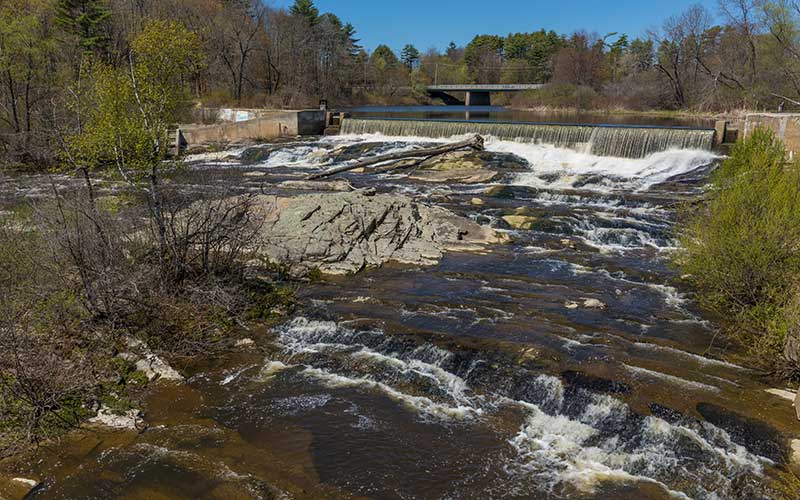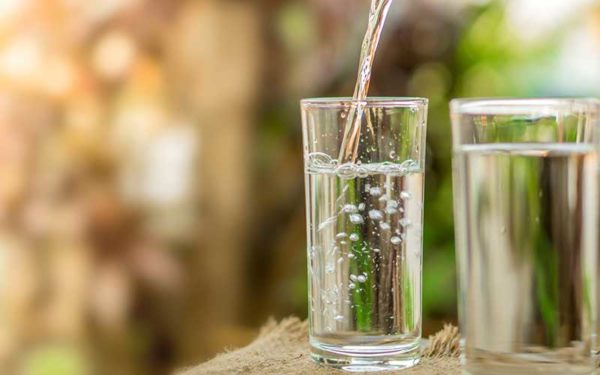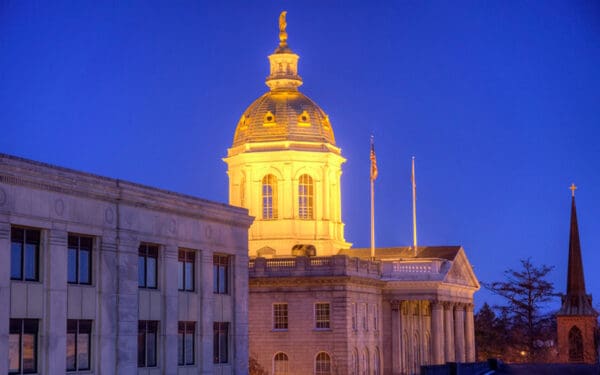
In Yarmouth, Maine, we're one step closer to restoring fish passage up the Royal River. Photo: EcoPhotography
They say that robins are harbingers of spring, but up in Maine, river herring – the collective term for alewives and blueback herring – are the true signs of the changing season. They spend the majority of their lives in the ocean, but come spring, they battle their way upriver to spawn in the freshwaters where they were born.
Throughout May and June, you can observe alewives and blueback herring as they once again make their way up our coastal rivers. These annual runs are spectacles to behold – especially when fish launch themselves over rocks and fallen tree branches to achieve their purpose.
Making this annual pilgrimage to their native freshwaters to spawn is critical to river herring’s survival. But thousands of dams, large and small, built over the last 250 years have cut these fish off from thousands of acres of freshwater bodies, thwarting reproductive cycles that had been ongoing for eons. The impacts of these dams, on top of pollution, overfishing, and climate change, have led to a drastic decline in river herring populations – threatening their survival.
Restoring river herring benefits a wide variety of species – including people
Making sure river herring reach their spawning waters isn’t just crucial for the survival of these two species. These fish are so vital to entire ecosystems that they’re known as keystone species – in other words, they hold the ecosystem together by providing a crucial food source that sustains many larger animals. Other species linked to the success of river herring include cod, salmon, and striped bass, as well as bald eagles, osprey, and other predatory birds. They’re also a key bait fish used by lobstermen.
Efforts to restore river herring are showing results
Restoring access to native habitat for these species is a time-consuming and uphill battle, with lots of moving pieces and players.
At the federal level, the Federal Energy Regulatory Commission, the U.S. Fish and Wildlife Service, Environmental Protection Agency, National Marine Fisheries Service, and the Army Corps of Engineers all have a role.
In Maine, the Department of Environmental Protection, Department of Marine Resources, and Department of Inland Fisheries and Wildlife all play a part, as well. So, too, do towns, private dam owners, utilities, and industry.
River restoration efforts can mean dam removal or enhancement or installation of fish passages. These efforts often include recreational and commercial fishers, Maine’s tribes, whitewater enthusiasts, and property owners who’ve grown used to the impoundments created behind the dams. And, of course, groups like CLF also are involved.
While it’s often a long-term project and can take several generations to see improvement in fish numbers, the results are well worth the effort. Consider Maine’s St. Croix River: A population of 2.5 million alewives in the 1980s plummeted to barely 900 by 2002. CLF and our partners worked to restore the river’s working fish ladder, and, in 2013, alewives began returning to their spawning grounds upriver. By mid-2017, more than 116,000 fish had already made the run up and over the St. Croix’s Milltown dam fishway to their native spawning waters – and the numbers have continued to surge! This year by mid-May, nearly a quarter-million fish had already been counted, making the life-sustaining run.
Dam removal continues across Maine
Meanwhile, work on the Presumpscot River continues even during the pandemic. Construction crews are removing portions of the Saccarappa Dam and related structures in Westbrook. This work started last year after more than a decade of advocacy by CLF and our partners at Friends of the Presumpscot River. Crews are also building the fishway for one side of the falls and working in the river itself to restore its natural state. The project is on target to be completed by October 2020 and should be ready for the return of alewives, blueback herring, American shad, and maybe, just maybe, Atlantic salmon by spring 2021.
And in Yarmouth on the Royal River, we continue to work toward removing the Bridge Street dam. In April, the federal government approved the surrender of a permit for generating power at the Old Sparhawk Mill. This puts us one step closer to the Town of Yarmouth, which owns the dam and the non-functioning fish ladder, taking action to either restore the fish passage or remove the dam.
The work is far from done!
CLF has long been involved in the fight to restore our native fish species’ access to New England’s lakes, ponds, and streams. We’ve worked through state and federal licensing proceedings, lawsuits, legislation, and cooperative negotiations to remove or modify human-made obstacles that block fish from returning to their native waters. We’ve worked at the federal level and state levels and with towns and private dam owners.
There’s still lots to be done, and CLF will continue leading the way and pushing new approaches to ensure the survival of these critical species.



